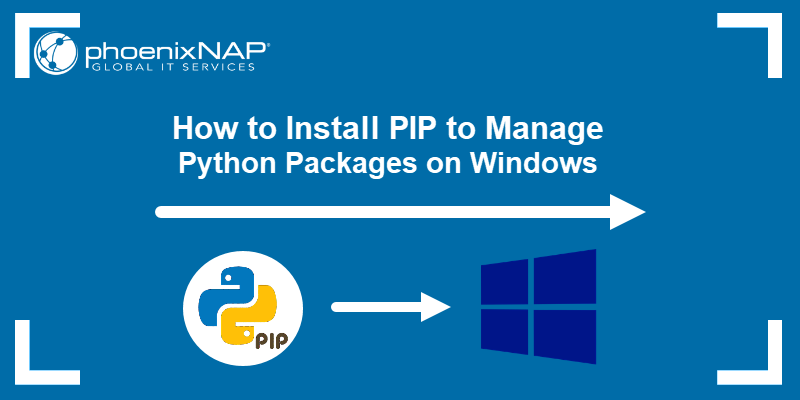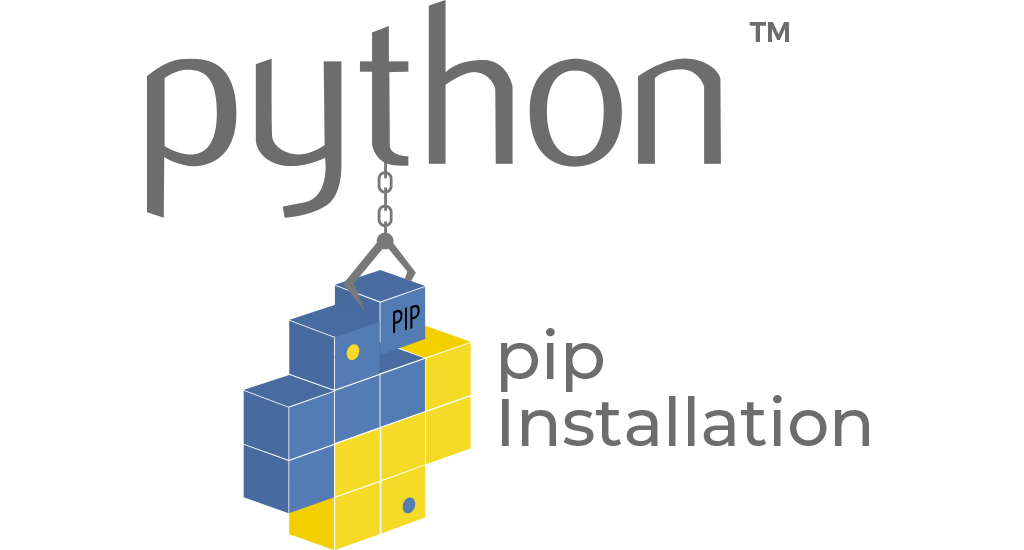Install pip for Python on Windows
Learn how to easily install pip, the Python package installer, on your Windows operating system and start managing Python packages effortlessly.
Learn how to easily install pip, the Python package installer, on your Windows operating system and start managing Python packages effortlessly.
This guide will walk you through the process of installing PIP, a package installer for Python, on your Windows operating system. After installation, you'll be able to easily download and manage Python packages. Let's get started!
Check if PIP is already installed: Open your command prompt (search for 'cmd' in the Windows search bar) and type pip --version. If PIP is installed, you'll see its version number. If not, proceed to the next step.
Download get-pip.py: Open your web browser and go to https://bootstrap.pypa.io/get-pip.py. Right-click on the page and select "Save as...". Save the file as get-pip.py in an easily accessible location, like your Downloads folder.
Run get-pip.py: Open your command prompt and navigate to the directory where you saved get-pip.py using the cd command. For example, if you saved it in your Downloads folder, type cd Downloads. Then, execute the following command: python get-pip.py. This will download and install PIP.
Verify installation: Once the installation is complete, type pip --version again in your command prompt. You should now see the PIP version number, confirming its successful installation.
(Optional) Add PIP to PATH: Adding PIP to your system's PATH environment variable allows you to run PIP commands from any directory without having to specify its full path. To do this:
\Scripts. For example: C:\Python310\Scripts.You have now successfully installed PIP on your Windows system and can start using it to manage Python packages.
This code snippet provides instructions on how to install PIP, a package installer for Python. It first checks if PIP is already installed. If not, it guides you to navigate to the directory where you downloaded the get-pip.py script and run it using Python. Finally, it verifies the PIP installation.
Unfortunately, I can't directly execute commands or interact with your file system (like downloading files or modifying environment variables).
However, I can provide you with the commands you need to use in your command prompt, along with explanations:
# 1. Check if PIP is installed
pip --version
# 2. Navigate to your Downloads folder (adjust if needed)
cd Downloads
# 3. Run the get-pip.py script (assuming you downloaded it)
python get-pip.py
# 4. Verify PIP installation
pip --versionExplanation:
pip --version: This command checks if PIP is installed and displays its version.cd Downloads: This command navigates to your Downloads folder. You might need to adjust the path if you saved get-pip.py elsewhere.python get-pip.py: This command executes the get-pip.py script, which downloads and installs PIP.Remember:
Let me know if you have any other questions.
Before you begin:
Troubleshooting:
get-pip.py, check your internet connection and try again. You can also try downloading the file from a different source.python get-pip.py, ensure that:
get-pip.py is saved.python and not python3 or another variation depending on your Python installation.pip after installation, even though the installation seemed successful, try closing and reopening your command prompt or restarting your computer. This ensures the changes to your environment variables (like adding PIP to PATH) are applied.Best Practices:
python -m pip install --upgrade pip.Additional Resources:
By following these steps and keeping these notes in mind, you'll be able to install and manage Python packages with PIP effectively.
This guide provides a concise summary of installing PIP, the package installer for Python, on Windows:
1. Check for Existing Installation:
cmd).pip --version. If a version number appears, PIP is already installed.2. Download get-pip.py (if not already installed):
get-pip.py in an accessible location (e.g., Downloads folder).3. Install PIP:
get-pip.py using the cd command (e.g., cd Downloads).python get-pip.py.4. Verify Installation:
pip --version. The PIP version number should now appear.5. (Optional) Add PIP to PATH:
C:\Python310\Scripts).You're now ready to use PIP to manage Python packages!
With PIP successfully installed, you can now effortlessly manage Python packages on your Windows system. Utilize the pip command to install, upgrade, and uninstall packages, opening up a world of possibilities for your Python projects. Remember to keep PIP updated and consider utilizing virtual environments for a streamlined development experience.
 Installing Packages - Python Packaging User Guide | Ensure you can run pip from the command line# · Securely Download get-pip.py [1] · Run python get-pip.py . [2] This will install or upgrade pip. Additionally, it ...
Installing Packages - Python Packaging User Guide | Ensure you can run pip from the command line# · Securely Download get-pip.py [1] · Run python get-pip.py . [2] This will install or upgrade pip. Additionally, it ... Installation - pip documentation v24.2 | Python comes with an ensurepip module[1], which can install pip in a Python environment. ... Windows, Linux and macOS. CPython 3.8, 3.9, 3.10, 3.11, 3.12 ...
Installation - pip documentation v24.2 | Python comes with an ensurepip module[1], which can install pip in a Python environment. ... Windows, Linux and macOS. CPython 3.8, 3.9, 3.10, 3.11, 3.12 ... How to Install PIP on Windows | phoenixNAP KB | Read our tutorial on how to install PIP on Windows using two different methods. Learn how to upgrade and downgrade PIP.
How to Install PIP on Windows | phoenixNAP KB | Read our tutorial on how to install PIP on Windows using two different methods. Learn how to upgrade and downgrade PIP. How to Install PIP on Windows in 6 Steps | Liquid Web | One of the best tools to install and manage Python packages is called PIP. This tutorial will show how to install PIP, check its current version, and learn basic commands.
How to Install PIP on Windows in 6 Steps | Liquid Web | One of the best tools to install and manage Python packages is called PIP. This tutorial will show how to install PIP, check its current version, and learn basic commands. Windows installer unable to install pip & pip can't install without ... | Something about security in Windows 10 has changed very recently. I don’t know if it’s just happening to me or if this is a new problem caused by a Windows update. I use Python for development of a lot of different projects so I have been installing new packages with pip every week until last night pip failed. It gave me an error I can’t remember: something about being unable to write a file. While troubleshooting the issue, I attempted to install the packages using a command prompt run as admin...
Windows installer unable to install pip & pip can't install without ... | Something about security in Windows 10 has changed very recently. I don’t know if it’s just happening to me or if this is a new problem caused by a Windows update. I use Python for development of a lot of different projects so I have been installing new packages with pip every week until last night pip failed. It gave me an error I can’t remember: something about being unable to write a file. While troubleshooting the issue, I attempted to install the packages using a command prompt run as admin... How to Install Pip on Windows - ActiveState | If you’re using an older version of Python, pip needs to be installed. This tutorial steps through how to install Pip on Windows, and keeping it updated.
How to Install Pip on Windows - ActiveState | If you’re using an older version of Python, pip needs to be installed. This tutorial steps through how to install Pip on Windows, and keeping it updated.